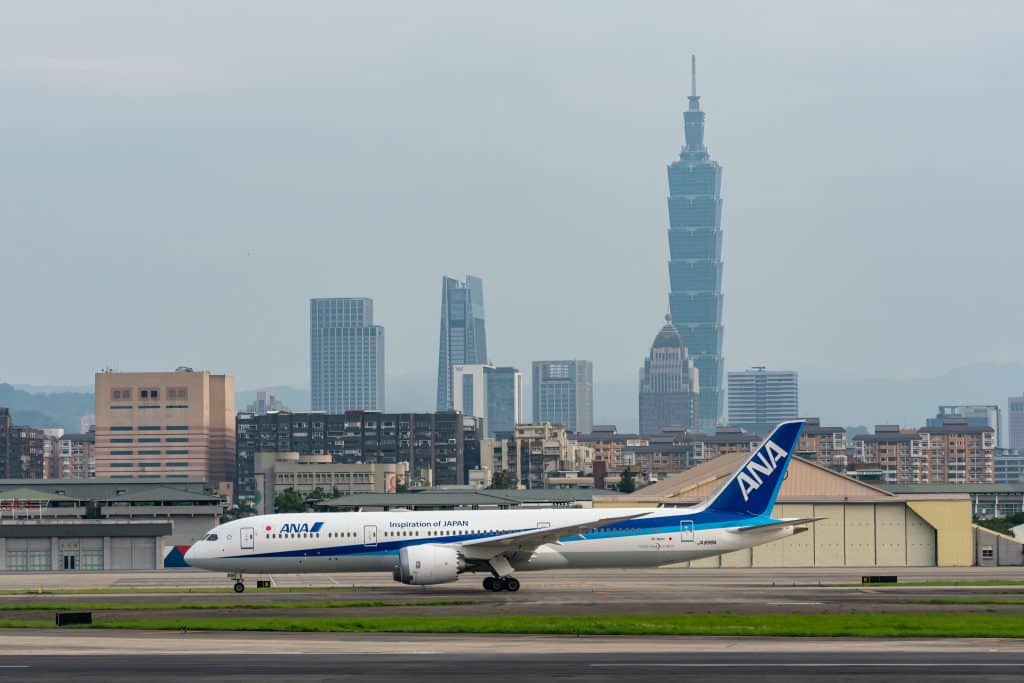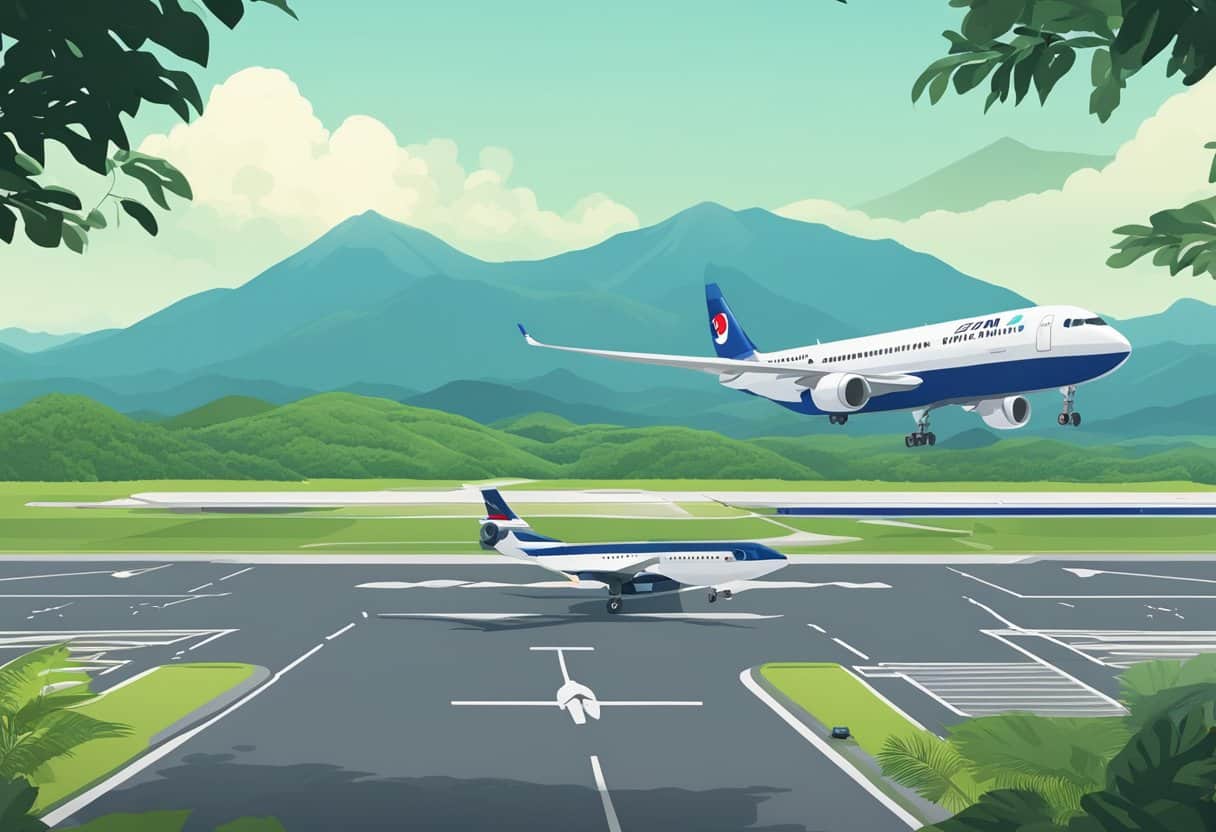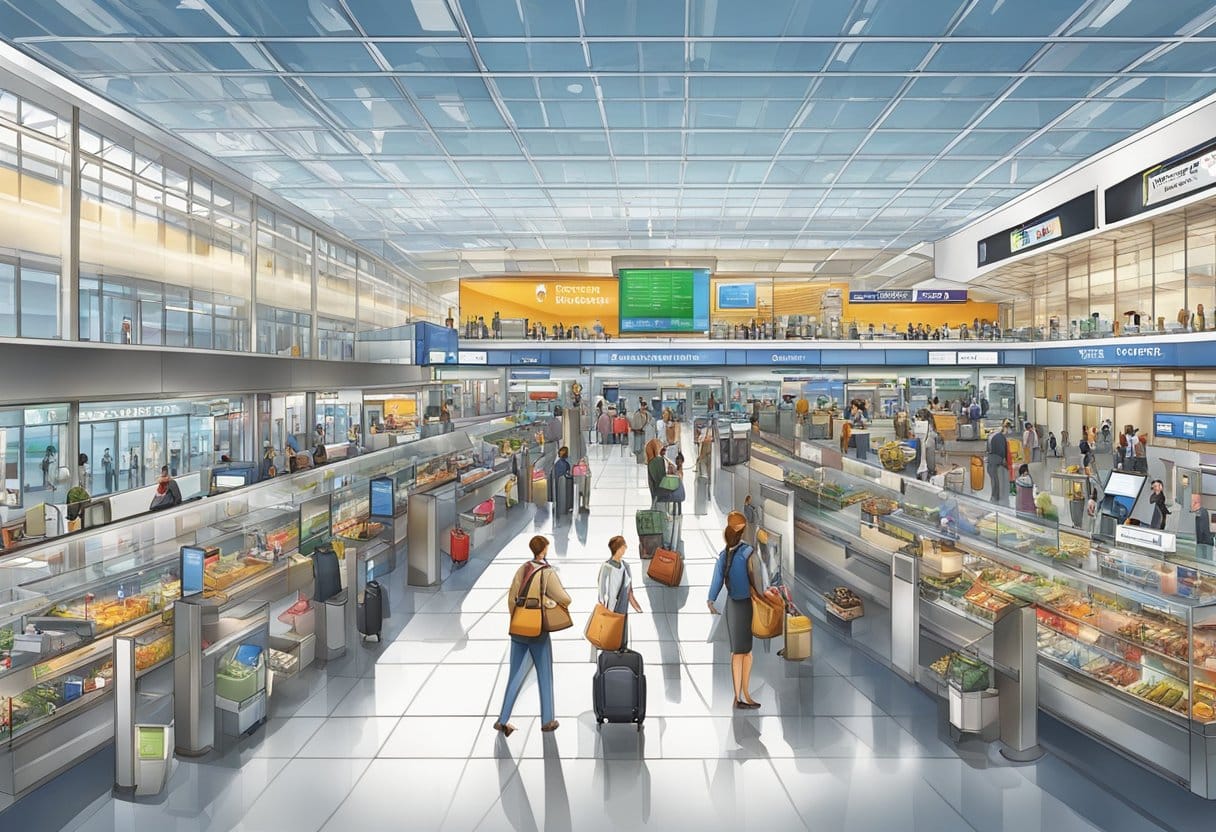TSA Airport Taiwan (Taipei Songshan Airport)
Taipei Songshan Airport (IATA: TSA, ICAO: RCSS), located in the metropolitan area of Taipei, serves as a vital hub for both domestic and regional travel within Asia. While it shares the city with Taiwan Taoyuan International Airport (IATA: TPE), TSA offers a unique advantage due to its proximity to downtown Taipei, making it a convenient option for business travelers and tourists alike.

TSA pairs its advantageous location with efficiency; passengers often appreciate the smaller size and quicker turnaround times compared to larger international counterparts. Despite its size, it provides a comprehensive range of services expected of an international airport, including connections to major cities in East Asia. With ongoing development and technological advancements, TSA demonstrates Taiwan’s commitment to maintaining a forward-thinking and user-friendly aviation sector.
Key Takeaways
- Taipei Songshan Airport is a key player in regional travel, offering efficiency and convenience.
- TSA’s strategic location and services cater to both domestic and international passengers.
- The airport supports Taiwan’s goal to optimize its aviation industry and connectivity.
Taiwan’s Airport Landscape

Taiwan’s aviation network is well-developed, featuring several international and domestic airports that facilitate both international and regional air travel across the island.
Overview of Airports in Taiwan
Taiwan boasts an extensive list of airports with varying roles, from major international gateways to smaller domestic airfields catering to regional travel. The airport codes are often used to reference these airports, such as TPE for Taiwan Taoyuan International Airport and TSA for Taipei Songshan Airport.
Major International Hubs
The Taiwan Taoyuan International Airport (TPE) stands as the largest and busiest airport in Taiwan, serving as a crucial hub for international flights to and from Asia and beyond. It is located in Taoyuan County, roughly 40 kilometers west of Taipei. The Taipei Songshan Airport (TSA), although smaller, plays a pivotal role by offering both international and domestic flights and is conveniently located within the city limits of Taipei.
Regional and Domestic Airfields
Taiwan also has regional airports like Kaohsiung International Airport in the south, Taichung Airport located centrally, and Hualien Airport to the east, which serve primarily domestic routes but also handle some international traffic. The island of Penghu is served by its own airport, linking it with other parts of Taiwan. These airports collectively ensure comprehensive air transport connectivity throughout the country and provide essential support to the larger hubs.
Taipei Songshan Airport (TSA)
Taipei Songshan Airport, often referred to by its ICAO code RCSS, is a significant hub for domestic flights within Taiwan and serves as an important international airport in Taipei.
History and Development
Taipei Songshan Airport has been a cornerstone in Taiwan’s aviation history. Established in 1936 during Japanese rule, it originally functioned as a military airbase. Following the end of World War II, it was repurposed and has since become a dual-use facility, serving military and civilian purposes. The airport’s prominent role in facilitating air travel for both domestic and international passengers has solidified its position in Taiwan’s transportation network. Its convenient location within the capital city of Taipei allows for easy access for travelers.
Airport Facilities and Services
The airport is equipped with a variety of facilities aimed to provide convenience and comfort to its passengers. These include shops, restaurants, and essential services often sought by the public in transit. Its terminals are designed to handle both international and cross-strait fights, illustrating its operational flexibility. With its scheduled flights to numerous destinations, Songshan Airport ensures efficient travel for individuals and businesses alike. Notably, the airport is recognized for its efforts in providing seamless services, notwithstanding its dual role as a military airbase.
Business and Economic Impact
As a critical component of Taipei’s infrastructure, Songshan Airport contributes significantly to the local and national economy. It facilitates not only travel and tourism but also plays a pivotal role in business connectivity. Its impact is felt across various sectors, promoting economic activities within the region. The airport’s contribution to Taipei’s economy underscores its value beyond its primary function as a transportation hub. By maintaining robust flight schedules and fostering commercial opportunities, TSA holds a key economic and strategic position in Taiwan.
Transportation and Connectivity
Taipei Songshan Airport, positioned in the heart of Taipei, Taiwan, boasts an impressive transportation network that facilitates seamless connectivity for travelers. It serves as a pivotal hub for reaching various destinations within the city and beyond.
Public Transit Options
Taipei is well-served by a robust public transit system. Songshan Airport is directly accessible via the Taipei Metro, commonly referred to as the MRT. Passengers can board at the airport’s own MRT station, conveniently connecting them to the city center and other districts. For those looking to travel further afield, the Taiwan High Speed Rail provides rapid transit along the western coast, offering an expedient link between major urban areas.
In addition, a variety of bus services operate to and from Songshan Airport, ensuring that passengers can reach their chosen destinations smoothly. These buses connect the airport to key locations across Taipei and the wider region, offering both convenience and efficiency.
Road Access and Car Rentals
Travelers preferring road travel have the option to utilize taxis, which provide direct and private transit to and from Songshan Airport. For those planning an extended stay or desiring more flexibility, car rental services are available at the airport. This allows for personal exploration of Taipei and surrounding areas at one’s own pace.
Furthermore, the airport is well-connected by major roadways, facilitating straightforward access for private vehicles and airport shuttle services. The latter offers a reliable mode of transport, notably for connections to other airports such as via the Taoyuan Airport MRT, further enhancing Taipei’s transportation ecosystem.
Taiwan Taoyuan International Airport (TPE)
Taiwan Taoyuan International Airport, commonly referred to as Taoyuan Airport, is the largest airport in Taiwan and a hub for international flights.
Airport Overview
Taiwan Taoyuan International Airport stands as the primary international gateway to and from Taiwan, serving millions of passengers each year. Located approximately 40 kilometers from the city center of Taipei, it operates with the IATA code TPE. Equipped with two terminals, Terminal 1 and Terminal 2, the airport is designed to handle a high frequency of flights and a sizable volume of passengers. Its coordinates place it strategically in Taoyuan City, making it a vital link to the region’s economy and tourism.
Passenger and Cargo Operations
The airport’s operation volume includes a vast array of international flights from a multitude of airlines, making it one of the busiest in terms of both passenger and cargo traffic. The several flight destinations and consistent frequency contribute to Taoyuan Airport’s status as an important hub in East Asia. The airport provides seamless connections for passengers and facilitates the transit of goods, thereby reinforcing the economic significance of Taoyuan International Airport.
Air Traffic Information
The air traffic control system at Taipei Songshan Airport (TSA) effectively manages both domestic and international flights, maintaining a steady flow of air traffic to destinations including Japan, Shanghai, Bangkok, Tokyo, Seoul, and more.
Air Traffic Control System
The Advanced Surface Movement Guidance and Control System (A-SMGCS) ensures efficient ground movement at TSA. The Automatic Terminal Information Service (ATIS) provides pilots with essential information like weather, runways in use, and special notices through continuous broadcasts. Pilots tune in to the specified ATIS frequency to stay updated with real-time conditions.
Flight Frequencies and Routes
TSA handles a mix of domestic flights within Taiwan and regional international flights. Frequencies include regularly scheduled journeys to major Asian cities, such as flights to Tokyo‘s Haneda Airport, Seoul‘s Gimpo Airport, and beyond. Frequent flyers can find a weekly route update, helpful for those planning a trip from Singapore to Taiwan. With its strategic location, TSA offers numerous flights daily to Shanghai, catering to business and leisure travelers alike. For those headed to Bangkok, understanding the current flight schedules and frequency helps in planning a seamless travel experience.
Safety and Regulations
Ensuring passenger safety is a top priority at Taiwanese airports, enforced by stringent security measures and adherence to international aviation standards.
Airport Security Measures
Taiwan’s transportation security aligns with global practices to safeguard the public. Airport security screening is rigorous, with travelers subjected to advanced checks that include baggage screening and body scans. The Taiwanese government mandates that all passengers and their luggage undergo these security protocols to prevent unauthorized and dangerous items from being boarded onto aircraft.
- Baggage Screening: All carry-on and checked luggage is screened via x-ray.
- Body Scans: Passengers may be required to pass through full-body scanners.
- Travel Documentation: Proper identification and travel documents are examined.
International Aviation Standards
Taiwan’s airports, including those managed by the Civil Aeronautics Administration (CAA), comply with International Civil Aviation Organization (ICAO) standards. This includes TSA protocols for international flights, ensuring a consistent level of safety across countries. The collaboration with ICAO and the international community ensures the Taiwanese military and the CAA are well-equipped to handle both civil and military aviation needs, maintaining a secure environment for all air travel.
- ICAO Compliance: Regular audits for safety and security.
- International Protocols: Adoption of TSA-recommended practices for international security.
- Collaboration: Ongoing cooperation with global organizations to update and refine security measures.
Airport Amenities and Services

Travelers through Taipei Songshan Airport and Taiwan Taoyuan International Airport enjoy a variety of amenities and services designed to make their journey more comfortable. These range from extensive shopping opportunities to diverse dining options and exclusive lounge facilities.
Retail and Duty-Free Shopping
Both airports feature a selection of retail stores, offering everything from luxury brands to local souvenirs. Duty-free shopping is available, allowing international passengers to purchase goods without the burden of local taxes. At Taiwan Taoyuan International Airport, passengers can find a wide array of products, from electronics to high-end fashion items.
Food and Beverage Outlets
A multitude of food and beverage outlets cater to all tastes and preferences, with options including international fast-food chains, traditional Taiwanese eateries, and coffee shops. Whether travelers are looking for a quick snack or a sit-down meal, both Taipei Songshan Airport and Taiwan Taoyuan International Airport provide an array of choices.
Lounge and VIP Services
To enhance the travel experience, passengers can access various lounge and VIP services. These lounges offer amenities like comfortable seating, complimentary refreshments, and high-speed internet access. For those looking for luxury, VIP services can include personal assistants and expedited security checks. Travelers can find more information on lounge access and services at Taiwan Taoyuan Airport lounges.
Future of Aviation in Taiwan
Taiwan is set on elevating its aviation industry, focusing on major expansions and advancements in technology. These changes represent a significant step towards positioning Taiwan as a key aviation hub in Asia.
Expansion and Modernization Plans
The government of Taiwan is investing significantly in the expansion and modernization of its aviation facilities. A notable development is the ongoing project for Terminal 3 at Taiwan Taoyuan International Airport, expected to significantly increase the airport’s passenger handling capacity. With an investment of approximately $1.56 billion, the enhanced terminal is forecasted to accommodate up to 43 million passengers yearly. Additionally, improvements to airport runways and infrastructure are in progress to ensure the aviation sector supports the growing demands of both public travel and cargo operations.
Innovation and Technology in Aviation
In terms of technology and innovation, Taiwan is making strides to compete at an international level. The country is fostering advancements in aerospace technology and is keen to establish a greater independent presence in the global market. With an increase in technological capabilities, including the deployment and utilization of drones, Taiwan is aiming to contribute more substantially to the aviation industry. Moreover, efforts are underway to facilitate Taiwan’s technical participation in international aviation governance, which underscores the country’s commitment to global aviation safety and cooperation.
Frequently Asked Questions
Navigating airports can be perplexing, but knowing the specifics of Taipei’s airports helps alleviate travel stress. Whether traveling through Taipei Songshan Airport (TSA) or Taoyuan Airport (TPE), it’s important to understand the amenities and transportation options available to passengers.
How can I travel from Taipei Songshan Airport to the city center?
Travelers can reach the city center from Taipei Songshan Airport efficiently by taking the MRT (Metro), taxis, or city buses. The airport is relatively close to downtown areas, making it a convenient entry point for visitors.
Are there any lounges available at Taipei Songshan Airport for travelers?
Yes, Taipei Songshan Airport offers lounge facilities for travelers seeking comfort and services. These lounges provide a space to relax and recharge before flights.
What are the key differences between Taipei’s Taoyuan and Songshan airports?
Taipei’s Taoyuan and Songshan airports differ in size, flight options, and proximity to the city. Taoyuan Airport is larger and serves as the primary international hub, while Songshan Airport offers closer access to the city and caters to domestic travelers as well as some international flights.
What are the available transportation options between Taoyuan Airport and Songshan Airport?
Transportation between Taoyuan Airport and Songshan Airport includes inter-airport shuttle buses, taxis, and the MRT with a transfer at Taipei Main Station. The journey can take approximately one to two hours depending on the mode of transport and traffic conditions.
Where can I find the departure schedule for Taipei Songshan Airport?
The departure schedule for Taipei Songshan Airport can be found on the airport’s official website or on various flight information platforms. These resources provide up-to-date flight status and schedules.
How do I navigate to Taipei Main Station from Songshan Airport?
To navigate to Taipei Main Station from Songshan Airport, passengers can utilize the MRT system, which offers a direct and efficient link. Alternatively, taxis are available, offering a quicker but more costly option.



